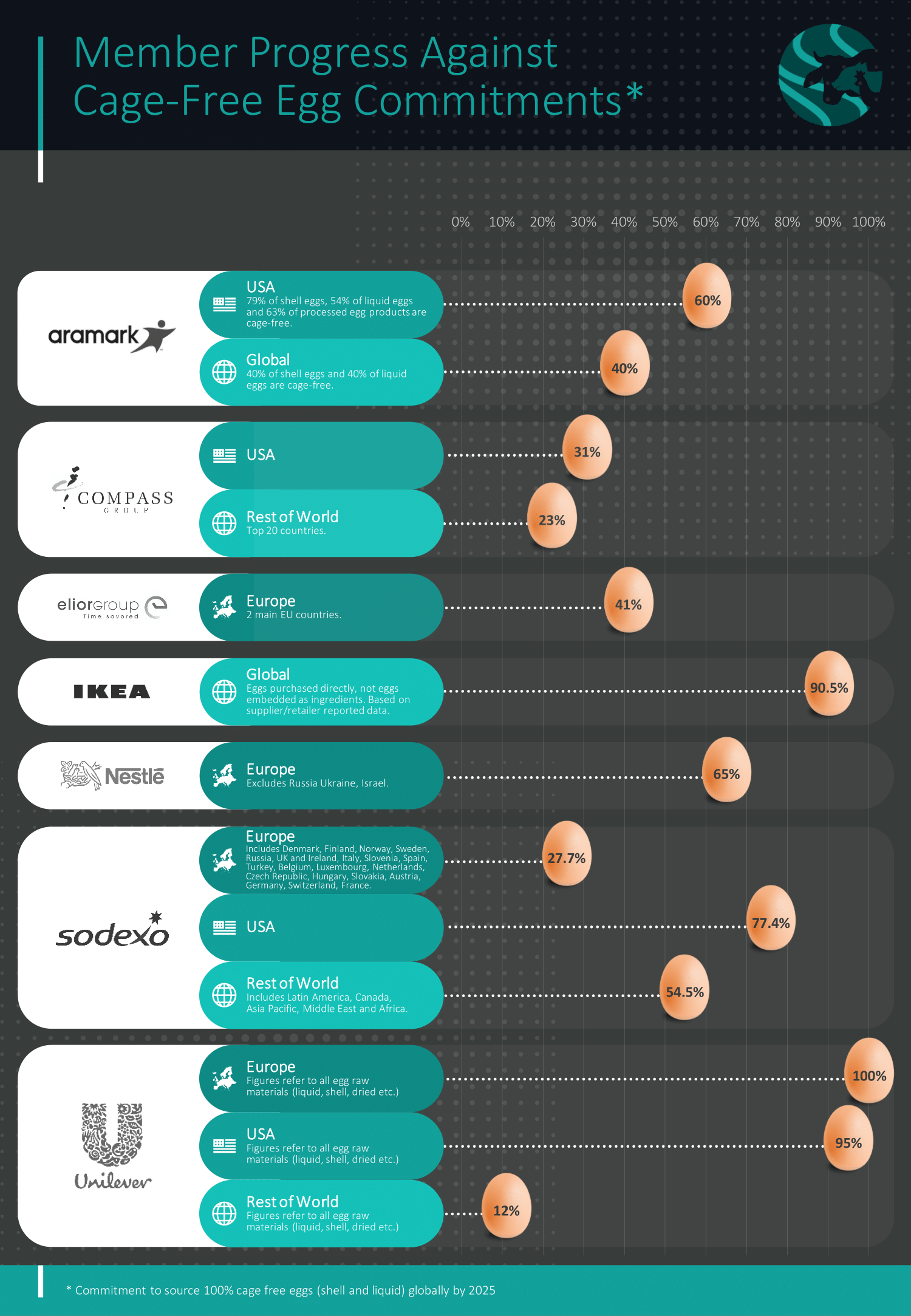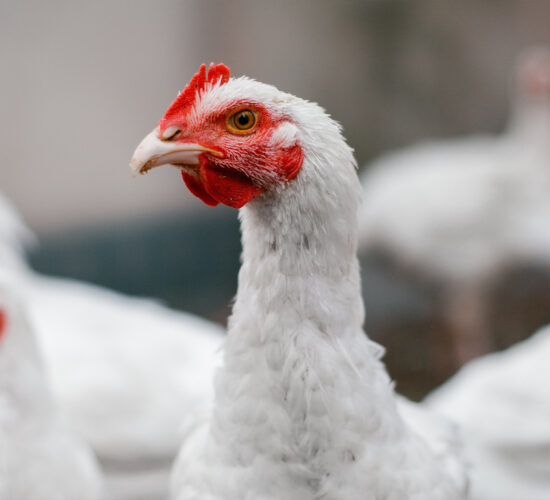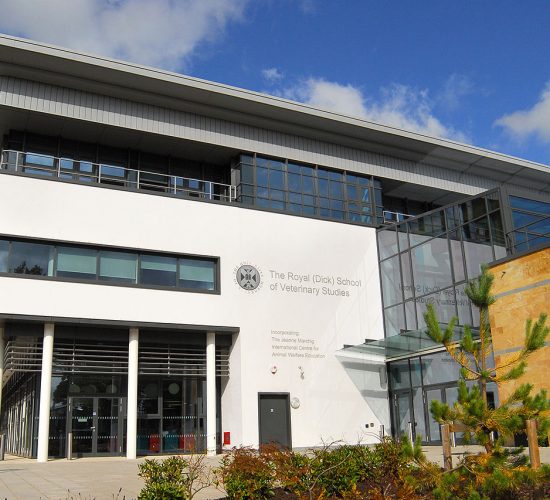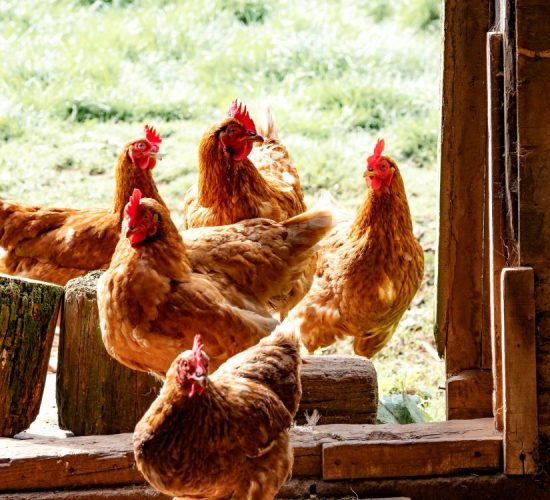GCAW members believe that cage systems for laying hens (including battery cages, furnished/enriched cages, and combi-cages used inappropriately) severely restrict behavioural freedom and prevent hens from expressing highly motivated behaviours. In contrast, cage-free systems (including single or multi-level barns or aviaries) allow the expression of a more diverse array of natural behaviour patterns when they contain facilities such as litter for dustbathing and foraging, nest boxes for egg laying and elevated perches (with the greatest behavioural diversity occurring in free-range systems 1). Member companies may have further detailed criteria in place linked to their commitments.
All GCAW members have made global commitments to source cage-free eggs by 2025. Most of these commitments cover fresh shell eggs, liquid egg, egg products and/or (liquid) eggs as ingredients. Progress against these commitments are published on a regular basis.
The current status of progress against cage-free egg commitments (download pdf)

What is a cage-free system?
A non-cage system is a system where an animal care-taker enters the space in which the animals are kept, whereas a cage is a system that is operated from the outside 2.
Cage and cage-free systems, with increasing welfare potential indicated in the direction of the arrow.

Combi- or convertible housing systems (or ‘lock-back’ cages) are not regarded as truly ‘cage-free’, as such systems combine aspects of conventional cages and multi-tiered aviaries. In a ‘doors closed’ position, hens are confined to cages and the system reverts to being a cage system.
1 Lay et al. (2011). Hen welfare in different housing systems. Poultry Science 90: 278-294.




